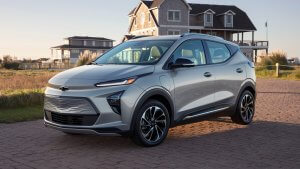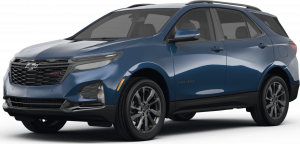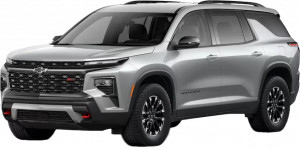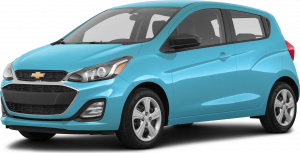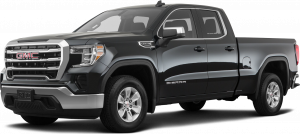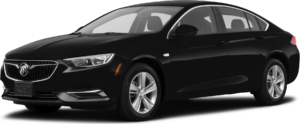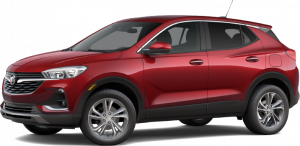CMP Automotive's Grocery Dash Rules and Regulations (the "Rules")
SPONSOR: Contest sponsored and administered by CMP Automotive, Calgary, AB
1. NO PURCHASE NECESSARY: No purchase is necessary to be entered into the contest. An entrant may create an entry via information submission.
2. ENTRY PERIODS: The Grocery Dash (the "Contest") commences on December 2, 2019 at 12:00:01 a.m. Mountain Time ("MT") and ends on December 13, 2019 at 2:00 p.m. MT (the "Entry Period").
3. ELIGIBILITY: Contest is open to all Alberta residents ages 18 or over, except employees, representatives or agents (and (i) their immediate family members and (ii) those with whom such persons are domiciled, whether related or not) of CMP Automotive, Calgary (the "Sponsor"), its parent companies, subsidiaries, affiliates, prize suppliers, dealers, advertising/promotion agencies and any entity involved in the development, production, implementation, or fulfillment of the Contest (collectively, the "Contest Parties"). In these Rules an "immediate family member" includes a spouse (including a common law spouse), father, mother, son, daughter, brother or sister, irrespective of whether they reside.
4. HOW TO ENTER: An eligible entry (each an "Entry") will be considered submitted when an eligible entrant visits the Sponsor’s dealership and purchases a new or used vehicle. During the Contest Period, eligible entrants can earn a maximum of one (1) Entry (each, an "Entry" and collectively, the "Entries") in one (1) of the following two (2) ways: Purchase a vehicle. (1) Entry will be automatically entered in the Contest when you complete a vehicle purchase during the Contest Period at the dealership; OR No Purchase Necessary. To obtain one (1) Entry in the Contest without purchasing a vehicle or submitting a credit application, send an email to submit@cmpauto.com and submit your first name, last name, telephone number, address, using a valid email address during the Contest Period. Upon receipt of your Request in accordance with these Rules, you will receive one (1) Entry in the Contest.
5. ENTRY LIMIT: There is a limit of one (1) Entry per person, regardless of the method of entry. If it is discovered by the Sponsor (using any evidence or other information made available to or otherwise discovered by the Sponsor) that any person has attempted to: (i) obtain more than one (1) Entry; and/or (ii) use multiple names and/or identities to enter or otherwise participate in or to disrupt this Contest; then he/she may be disqualified from the Contest in the sole and absolute discretion of the Sponsor. Your Entry may be rejected if (in the sole and absolute discretion of the Sponsor) the Entry Form/Request is not fully completed with all required information and submitted and received in accordance with these Rules.
6. VERIFICATION: All Entries/Requests are subject to verification at any time and for any reason. The Sponsor reserves the right, in its sole and absolute discretion, to require proof of identity and/or eligibility (in a form acceptable to the Sponsor - including, without limitation, government-issued photo identification): (i) for the purposes of verifying an individual's eligibility to participate in this Contest; (ii) for the purposes of verifying the eligibility and/or legitimacy of any Entry, Request or other information entered (or purportedly entered) for the purposes of this Contest; and/or (iii) for any other reason the Sponsor deems necessary, in its sole and absolute discretion, for the purposes of administering this Contest in accordance with these Rules. Failure to provide such proof to the complete satisfaction of the Sponsor within the timeline specified by the Sponsor may result in disqualification in the sole and absolute discretion of the Sponsor. The sole determinant of the time for the purposes of this Contest will be the Sponsor's Official Clock(s). All personal and other information requested by and supplied to the Sponsor for the purpose of the Contest must be truthful, complete, accurate and in no way misleading. The Sponsor reserves the right, in its sole discretion, to disqualify any entrant should such an entrant at any stage supply untruthful, incomplete, inaccurate or misleading personal details and/or information or otherwise not comply in full with these rules. All entries become the sole property of the Sponsor and none will be returned for any reason. Entries will be declared invalid if they are late, illegible, incomplete, damaged, irregular, mutilated, forged, garbled or mechanically or electronically reproduced. No communication or correspondence will be exchanged with entrants except with those selected.
7. PRIZE: There will be ten (10) Grocery Dash winners. Once selected entrant has been successfully contacted, notified of his/her Prize, fulfilled the requirements set out herein and been declared a winner, he/she may claim his/her Prize at a time and date to be arranged between the Sponsor (or its agents) and the winner, acting reasonably. Prize must be accepted as awarded and cannot be transferred, assigned or substituted accepted as permitted by these Rules. The Sponsor reserves the right, in its sole discretion, to substitute a prize of equal or greater value if the Prize (or any portion thereof) cannot be awarded for any reason. No cash value substitution will be given. The Grocery Dash will take place 6:00 AM, Mountain Time at the Forest Lawn, Sobeys, located at, 5101 17 Ave SE, Calgary, AB. Dashers will have one (1) minute inside the grocery store to grab as much food as they can. Shopping cart will be provided. All items must be unique, cannot have two (2) identical items. Once the sixty (60) seconds are up, you must take your cart to the check-out to be scanned through. Excludes gift baskets. CMP Automotive is not affiliated with Sobeys.
8. WINNER SELECTION: Ten (10) winners will be drawn on December 15, 2018 in Calgary, AB at approximately 2:00 pm, Mountain Time. The odds of winning depend on the number of eligible Entries submitted and received in accordance with these Rules. We approximate 75 entries for an odd of 10 in 75.
9. WINNER CONFIRMATION PROCESS: The Sponsor or its designated representative will make a minimum of three (3) attempts to contact the eligible winner (using the information provided on the Entry Form/Request) within seven (7) business days of the Draw Date. If the eligible winner cannot be contacted within seven (7) business days of the Draw Date, or if there is a return of any notification as undeliverable, then he/she may, in the sole and absolute discretion of the Sponsor, be disqualified (and, if disqualified, will forfeit all rights to the Prize) and the Sponsor reserves the right, in its sole and absolute discretion and time permitting, to randomly select an alternate eligible entrant from among the remaining eligible Entries submitted and received in accordance with these Rules (in which case the foregoing provisions of this section shall apply to such newly selected eligible winner). BEFORE BEING DECLARED THE CONFIRMED PRIZE WINNER, the eligible winner will be required to: (a) correctly answer a mathematical skill-testing question without mechanical or other aid (which may, in the sole and absolute discretion of the Sponsor, be administered online, by email or other electronic means, by telephone, or in the Sponsor's form of declaration and release); and (b) sign and return within five (5) business days of notification the Sponsor's declaration and release form, which (among other things): (i) confirms compliance with these Rules; (ii) acknowledges acceptance of the Prize (as awarded); (iii) releases the Released Parties from any and all liability in connection with this Contest, his/her participation therein and/or the awarding and use/misuse of the Prize or any portion thereof; and (iv) agrees to the publication, reproduction and/or other use of his/her name, address, voice, statements about the Contest and/or photograph or other likeness without further notice or compensation, in any publicity or advertisement carried out by or on behalf of the Sponsor in any manner or medium whatsoever, including print, broadcast or the internet. If the eligible winner: (a) fails to correctly answer the skill-testing question ; (b) fails to return the properly executed Contest documents within the specified time; (c) cannot accept (or is unwilling to accept) the Prize (as awarded) for any reason; and/or (d) is determined to be in violation of these Rules (all as determined by the Sponsor in its sole and absolute discretion); then he/she will be disqualified (and will forfeit all rights to the Prize) and the Sponsor reserves the right, in its sole and absolute discretion and time permitting, to randomly select an alternate eligible entrant from among the remaining eligible Entries submitted and received in accordance with these Rules (in which case the foregoing provisions of this section shall apply to such newly selected eligible winner).
10. GENERAL CONDITIONS:
All Entries become the property of the Sponsor. This Contest is subject to all applicable federal, provincial and municipal laws. The decisions of the Sponsor with respect to all aspects of this Contest are final and binding on all entrants without right of appeal, including, without limitation, any decisions regarding the eligibility/disqualification of Entries, Requests and/or entrants. By participating in this Contest, you are agreeing to be legally bound by the terms and conditions of these Rules. ANYONE DEEMED BY THE SPONSOR TO BE IN VIOLATION OF THESE RULES FOR ANY REASON IS SUBJECT TO DISQUALIFICATION IN THE SOLE AND ABSOLUTE DISCRETION OF THE SPONSOR AT ANY TIME.
The Released Parties will not be liable for: (i) any failure during the Contest; (ii) any malfunction or other problems of any nature whatsoever; (iii) the failure of any Entry, Request or other information to be received, captured or recorded for any reason whatsoever; and/or (iv) any combination of the above.
The Sponsor reserves the right, in its sole and absolute discretion, to withdraw, amend or suspend this Contest (or to amend these Rules) in any way, in the event of any cause beyond the reasonable control of the Sponsor that interferes with the proper conduct of this Contest as contemplated by these Rules, including, without limitation, any error, problem, tampering, unauthorized intervention, fraud or failure. Any attempt to undermine the legitimate operation of this Contest in any way (as determined by Sponsor in its sole and absolute discretion) is a violation of criminal and civil laws and should such an attempt be made, the Sponsor reserves the right to seek remedies and damages to the fullest extent permitted by law. The Sponsor reserves the right, in its sole and absolute discretion, to cancel, amend or suspend this Contest, or to amend these Rules, in any way without prior notice or obligation, in the event of any accident, printing, administrative, or other error of any kind, or for any other reason whatsoever. Without limiting the generality of the foregoing, the Sponsor reserves the right, in its sole and absolute discretion, to administer an alternate test of skill as it deems appropriate based on the circumstances and/or to comply with applicable law.
By entering this Contest, each entrant expressly consents to the Sponsor, its agents and/or representatives, storing, sharing and using the personal information submitted with his/her Entry/Request only for the purpose of administering the Contest and in accordance with Sponsor's privacy policy (available at: http://kaizenauto.com/custom/privacy-policy). This section does not limit any other consent(s) that an individual may provide the Sponsor or others in relation to the collection, use and/or disclosure of their personal information.
The Sponsor reserves the right, in its sole and absolute discretion, to adjust any of the dates, timeframes and/or other Contest mechanics stipulated in these Rules, to the extent necessary, for purposes of verifying compliance by any entrant or Entry/Request with these Rules, or as a result of any other problems, or in light of any other circumstances which, in the opinion of the Sponsor, in its sole and absolute discretion, affect the proper administration of the Contest as contemplated in these Rules, or for any other reason.
In the event of any discrepancy or inconsistency between the terms and conditions of these Rules and disclosures or other statements contained in any Contest-related materials, the terms and conditions of these Rules shall prevail, govern and control.
By entering the Contest, entrant releases and holds the Released Parties harmless from any and all liability for any injuries, loss or damage of any kind to the entrant or any other person, including personal injury, death, or property damage, resulting in whole or in part, directly or indirectly, from acceptance, possession, use or misuse of any Prize, participation in the Contest, any breach of the Rules, or in any Prize-related activity. The entrant agrees to fully indemnify the Released Parties from any and all claims by third parties relating to the Contest, without limitation.
The Sponsor assumes no responsibility or liability for lost, late, unintelligible/illegible, falsified, damaged, misdirected or incomplete entries, notifications, responses, replies or any Release, or for any computer, online, software, telephone, hardware or technical malfunctions that may occur, including but not limited to malfunctions that may affect the transmission or non-transmission of an entry. The Sponsor is not responsible for any incorrect or inaccurate information, whether caused by website users or by any of the equipment or programming associated with or utilized in the Contest or by any technical or human error which may occur in the administration of the Contest. The Sponsor assumes no responsibility for any error, omission, interruption, deletion, defect, delay in operation or transmission, communications line failure, theft or destruction or unauthorized access to, or alteration of, entries. The Sponsor is not responsible for any problems, failures or technical malfunction of any telephone network or lines, computer online systems, servers, providers, computer equipment, software, e-mail, players, or browsers, on account of technical problems or traffic congestion on the Internet, at any website, or on account of any combination of the foregoing. The Sponsor is not responsible for any injury or damage to entrant or to any computer related to or resulting from participating or downloading materials in this Contest. Entrant assumes liability for injuries caused or claimed to be caused by participating in the Contest, or by the acceptance, possession, use of, or failure to receive any Prize. The Sponsor assumes no responsibility or liability in the event that the Contest cannot be conducted as planned for any reason, including those reasons beyond the control of the Sponsor, such as infection by computer virus, bugs, tampering, unauthorized intervention, fraud, technical failures, or corruption of the administration, security, fairness, integrity or proper conduct of this Contest.
All intellectual property, including but not limited to trade-marks, trade names, logos, designs, promotional materials, web pages, source code, drawings, illustrations, slogans and representations are owned by the Sponsor and/or its affiliates. All rights are reserved. Unauthorized copying or use of any copyrighted material or intellectual property without the express written consent of its owner is strictly prohibited.
